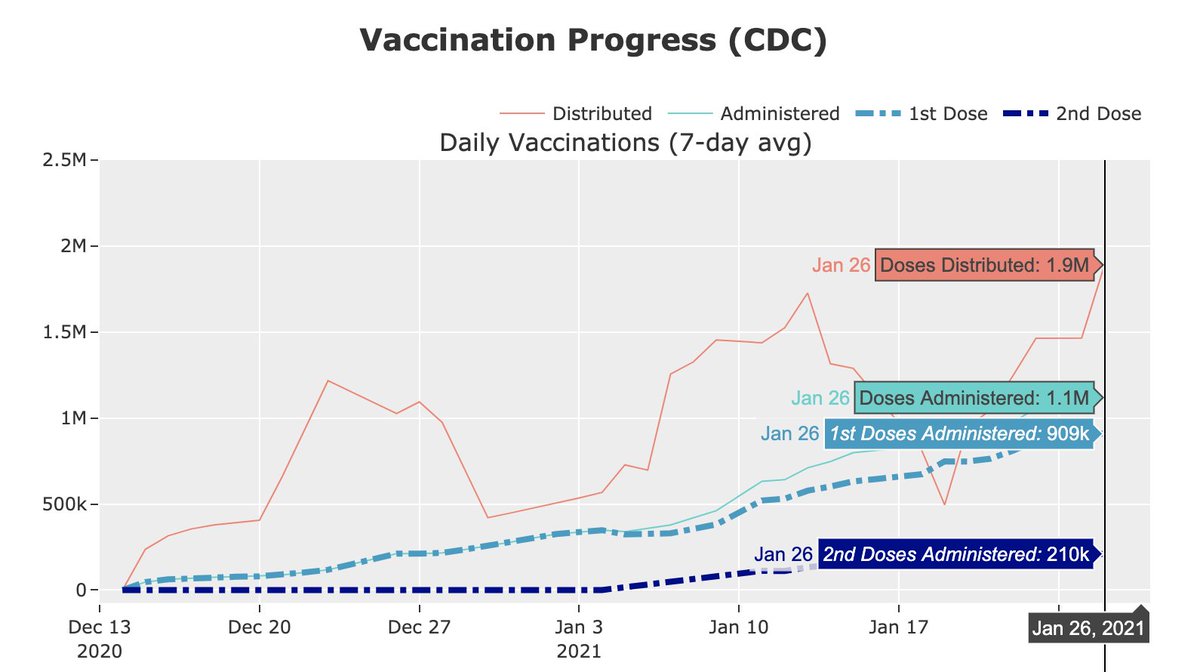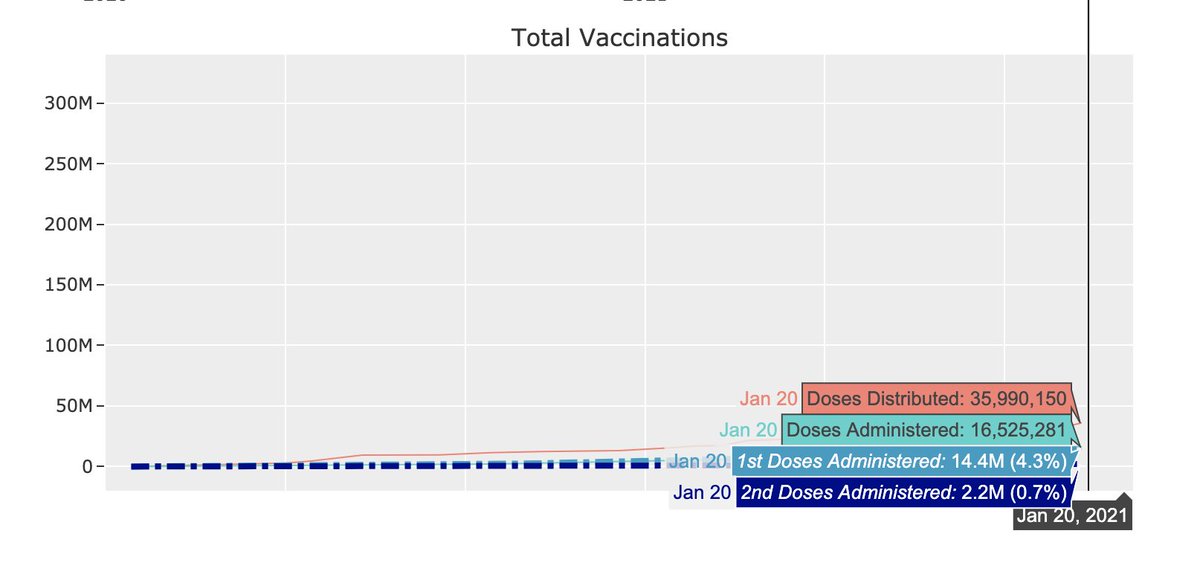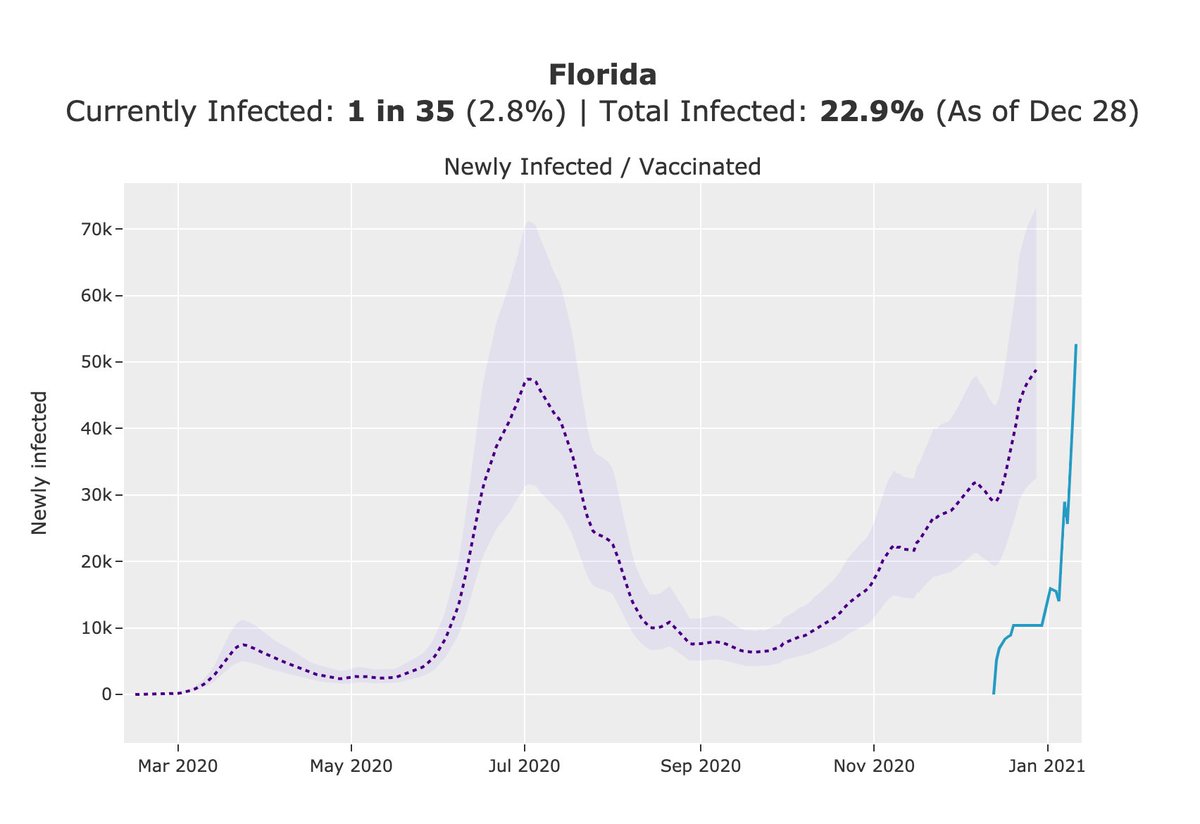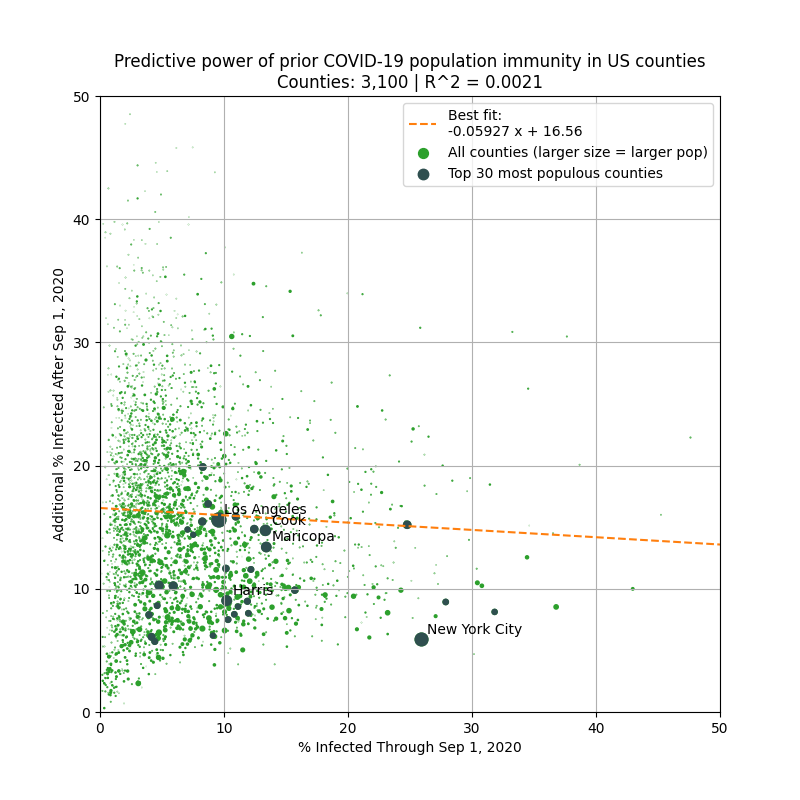
A month ago, I reported on @CDCgov's overestimate of true infections in the US.
It appears that last week, the CDC significantly lowered their estimates. It now closely matches covid19-projections.com's latest estimate of ~83M infected (~25% of the population).

It appears that last week, the CDC significantly lowered their estimates. It now closely matches covid19-projections.com's latest estimate of ~83M infected (~25% of the population).


My thread from last month is below, where I highlight the flaws in the CDC's original estimates (91M infections through November 2020 and a 7:1 infections to case ratio).
https://twitter.com/youyanggu/status/1344002411556339712
Their explanation:
"Since the previous update, CDC has received additional data about the proportion of persons with symptomatic illness who seek [..] testing services. The higher values of health-seeking behavior result in lower estimates of infections"
cdc.gov/coronavirus/20…
"Since the previous update, CDC has received additional data about the proportion of persons with symptomatic illness who seek [..] testing services. The higher values of health-seeking behavior result in lower estimates of infections"
cdc.gov/coronavirus/20…

The CDC lowered the fraction of true COVID-19 infections that are reported by 40%, from 1 in 7.2 to 1 in 4.6.
Their new 95% uncertainty interval (1 in 4.0-5.4) is completely disjoint from their original interval (1 in 6.2-8.5).
They have yet to release an updated methodology.
Their new 95% uncertainty interval (1 in 4.0-5.4) is completely disjoint from their original interval (1 in 6.2-8.5).
They have yet to release an updated methodology.
Given this drastic change in results, it seems reasonable (to a non-academic like myself) that their original paper in "Clinical Infectious Diseases", a top infectious diseases journal, be retracted or at the very least, be corrected.
academic.oup.com/cid/advance-ar…
academic.oup.com/cid/advance-ar…
I hope this is not representative of the standards for paper acceptance across academia.
Otherwise, I would unfortunately not blame people for being skeptical of peer review/published results.
Trust in science should not be automatically given - it should be earned.
Otherwise, I would unfortunately not blame people for being skeptical of peer review/published results.
Trust in science should not be automatically given - it should be earned.
I have always tried to judge scientific work by the quality of the work itself, not by who wrote it.
Unfortunately, this has not been always true in academia, as some have accused me of "intellectual elitism" for simply critiquing CDC's work.
Unfortunately, this has not been always true in academia, as some have accused me of "intellectual elitism" for simply critiquing CDC's work.
https://twitter.com/_stah/status/1344034223397744644
As I've said last time, I highly respect the work that the CDC does. And that's why I also hold their work to the same high standards.
https://twitter.com/youyanggu/status/1344002450877911041
I think the mentality of "don't question the experts because they must be right" can sometimes be detrimental and hinder the progress of ideas.
Of course, there should always be a balance (i.e. one cannot simply dismiss scientific results). And this balance can be a fine line.
Of course, there should always be a balance (i.e. one cannot simply dismiss scientific results). And this balance can be a fine line.
• • •
Missing some Tweet in this thread? You can try to
force a refresh



















